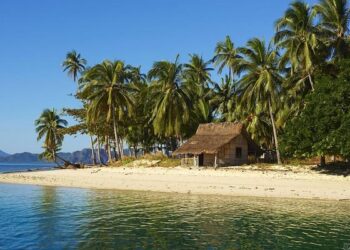A new partnership has been announced to develop a large-scale integrated renewable energy system on the Ă land Islands, marking a significant step forward in the region’s sustainable energy transition. Spearheaded by lhyfe.com, a leading green hydrogen producer, the collaboration aims to combine multiple renewable energy sources to create a resilient and efficient clean energy infrastructure. This initiative is expected to bolster Ă land’s energy independence while contributing to broader efforts to reduce carbon emissions across the Nordic region.
New Partnership Aims to Transform Ă land into a Renewable Energy Hub
In a bold move set to redefine energy production in the Nordic region, multiple key stakeholders have joined forces to implement an ambitious renewable energy project on Ă land. The collaborative initiative will leverage cutting-edge technologies to create an integrated system combining wind, solar, and hydrogen power, positioning the archipelago as a pioneering renewable energy hub. This partnership is focused on delivering sustainable solutions tailored to meet both local energy demands and export goals, aiming to significantly reduce carbon emissions while promoting energy independence.
Key components of the project include:
- Development of offshore and onshore wind farms with expanded capacity
- Installation of advanced solar arrays optimized for the unique Ă land climate
- Electrolyzer facilities to produce green hydrogen from renewable electricity
- Integrated energy storage and smart grid systems for enhanced reliability
| Project Element | Expected Capacity | Timeline |
|---|---|---|
| Wind Power | 100 MW | 2025-2027 |
| Solar Power | 40 MW | 2024-2026 |
| Hydrogen Production | 15,000 kg/day | 2026-2028 |
Innovative Technologies and Integrated Systems Drive Sustainable Development
At the heart of this groundbreaking collaboration lies the deployment of cutting-edge renewable technologies, designed to optimize energy production and distribution across Ă land’s unique island environment. By leveraging a blend of hydrogen generation, solar, and wind power, the integrated system promises to reduce dependency on fossil fuels significantly. This initiative also emphasizes the importance of smart grid solutions, enabling real-time energy management and efficient load balancing to meet the varying demands of local communities and industries.
Key components of the integrated renewable energy system include:
- Advanced electrolysis units for green hydrogen production
- State-of-the-art photovoltaic panels optimized for northern climates
- High-capacity offshore and onshore wind turbines
- Energy storage modules with fast-response capabilities
- Intelligent monitoring platforms ensuring seamless system integration
| Technology | Capacity | Projected Impact |
|---|---|---|
| Green Hydrogen Electrolysis | 5 MW | 3,500 tons H2/year |
| Solar Photovoltaics | 10 MW | 12,000 MWh/year |
| Wind Turbines | 15 MW | 35,000 MWh/year |
This synergy of technologies not only fosters energy independence but also positions Ă land as a model for sustainable island communities worldwide. By integrating versatile renewable sources with intelligent infrastructure, the partnership paves the way for scalable solutions tailored to complex geographic and environmental contexts.
Recommendations for Stakeholders to Maximize Impact and Foster Long-Term Success
To ensure the ambitious renewable energy project on Ă land achieves its full potential, stakeholders must prioritize collaboration and transparent communication from the outset. Aligning objectives among local authorities, technology providers, and community groups will foster a unified vision and facilitate swift decision-making. Equally important is the integration of adaptive management strategies that accommodate evolving technologies and regulatory landscapes, ensuring the system remains resilient and future-proof.
Investment in continuous monitoring and data sharing will be crucial for optimizing system performance and maximizing economic and environmental benefits. Stakeholders should also champion community engagement initiatives that educate and involve residents, building local support and nurturing a culture of sustainability. Below is a summary of key focus areas for driving long-term success:
- Cross-sector Partnerships: Facilitate knowledge exchange and resource pooling.
- Innovative Financing: Explore blended funding models combining public and private capital.
- Regulatory Alignment: Streamline permitting processes and align policies.
- Community Inclusion: Promote local job creation and environmental stewardship.
| Focus Area | Key Action | Expected Outcome |
|---|---|---|
| Collaboration | Regular Stakeholder Forums | Improved decision-making speed |
| Innovation | Pilot Emerging Tech | Enhanced efficiency and scalability |
| Engagement | Community Workshops | Strengthened public buy-in |
| Financing | Diversified Funding Sources | Stable long-term capital flow |
Final Thoughts
The newly announced partnership marks a significant step forward in advancing large-scale integrated renewable energy solutions on Ă land. By combining expertise and resources, the collaborators aim to create a pioneering system that not only supports local energy needs but also serves as a model for sustainable development worldwide. As the project moves from planning to implementation, stakeholders and observers alike will be watching closely to see how this initiative shapes the future of clean energy in the region and beyond.
















